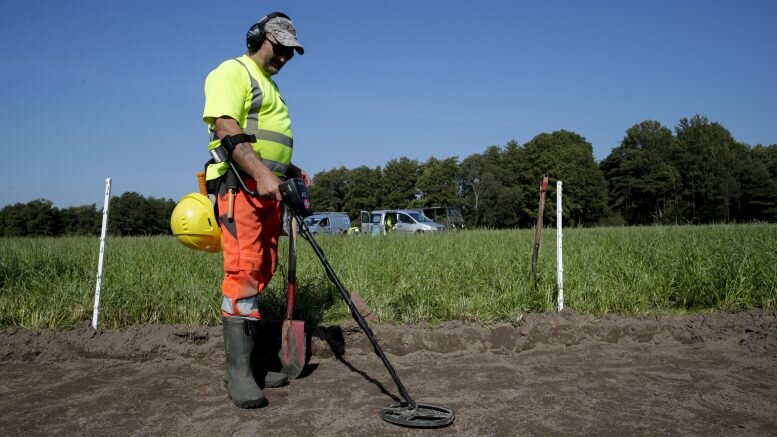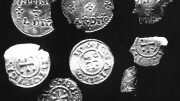Modern-day treasure hunters are on the search for ancient troves.
Across Norway, it’s becoming increasingly popular to go exploring for archeological treasures with metal detectors. The vast majority of metal detector finds today are made on agricultural land.
“Private use of metal detectors has increased significantly in recent years,” senior adviser Lars Reinholt Aas at the Norwegian Directorate for Cultural Heritage told NTB.
Every single day, significant discoveries are made by individuals in Norway. One such amateur discovery – though not with the help of a metal detector – actually led to the blossoming of a whole new archeological field of study in Norway: ice archeology. We covered this instance in a two-part article series here and here.
As for metal detector finds, very few of them find their way to newspaper headlines, Aas explained. He added that “it is therefore important to ensure that these objects are stored by museums so that they can become pieces in the big prehistoric puzzle of Norway.”
Record-breaking “finder’s salary”: 200,000 NOK
If you come upon a particularly valuable and old object, you may be able to receive a finder’s salary.
The Norwegian Directorate for Cultural Heritage has paid as much as 200,000 NOK for a finder’s salary – a record in Norway.
This sum was paid for the discovery of gold rings from the Iron Age. They were found using a metal detector in Skaun in Trøndelag.
The money was divided between the rings’ discoverer and the landowner.
Criminal to keep archological finds
If you find, for example, a Viking sword, take it home, and keep it, you risk serious punishment.
There are clear rules for what to do – and what not to do – for such finds.
Cultural artifacts, monuments, and sites from Antiquity and the Middle Ages (that is, through the year 1537 AD), are considered state property. The same applies to coins predating the year 1650 and any Sámi artifacts, monuments, and sites over 100 years old. Such finds are required to be reported and handed in under the Cultural Heritage Act.
If you decide to keep a historic cultural find, you can face fines and/or imprisonment for up to one year. Under particularly serious circumstances, prison sentences can last up to two years.
“Fortunately, our experience is that most people want to be honest, and some metal detector searchers have also collaborated with the government during archaeological excavations,” Aas said.
Sharp increase in the last ten years
Five university museums in Norway receive finds from both private individuals and professional excavations. Among these is the Museum of Cultural History at the University of Oslo (UiO).
Archaeologist and professor Frode Iversen from UiO explained that private discoveries using metal search account for most of what is submitted. In the last ten years, it has taken off completely, he said.
“We now get so many findings that we do not really know what to do with everything,” Iversen told NTB.
There are still large amounts of preserved objects from ancient times under the ground around Norway, according to Iversen. In particular, one can find objects in areas where there are imprints from houses from the Iron Age, as well as old rubbish pits or cooking pits.
“It is a very special feeling to find an ax that no one has held for over 10,000 years,” Iversen said.
The “Holy Grail”
All finds play a small role in increasing our modern-day understanding of the past. At the same time, new, exciting methods are constantly being developed to analyze the findings, Iversen explained.
“Therefore, it is not always a question of finding new things. It is just as much a question of re-analyzing old material. It’s amazing how much information you can get out of a skeleton these days,” he said.
Iversen finds it difficult to answer what “the Holy Grail” for archaeologists is, but interpreting ancient rock carvings would be huge, he believes.
“We do not fully understand the stories behind the motives. At this time, there was no known written language – runes come later. A kind of “code-breaker” for petroglyphs would be fantastic, but such a thing does not exist at this time,” he said.
Source: ©️ NTB Scanpix / #NorwayTodayTravel
Do you have a news tip for Norway Today? We want to hear it. Get in touch at [email protected]



Be the first to comment on "More and more Norwegians are searching for archeological treasure with metal detectors"